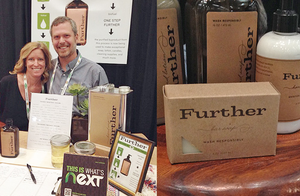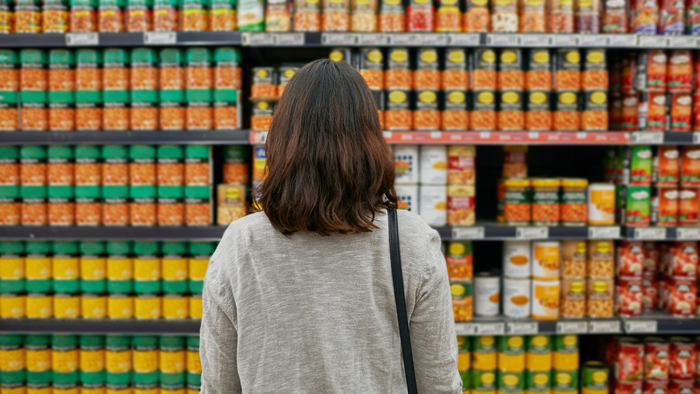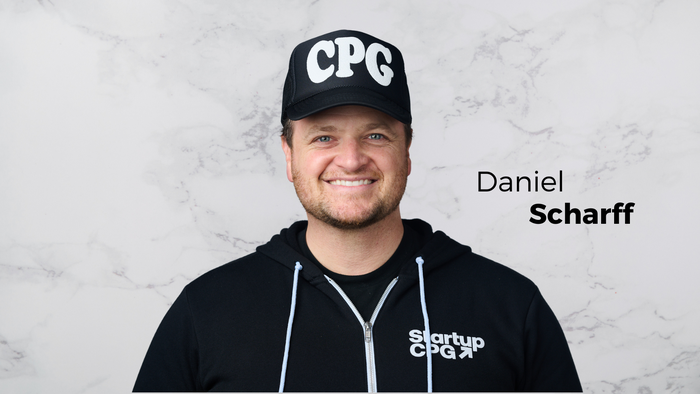The natural beauty industry's biggest opportunity: food waste?
From ingredients to packaging, natural personal care companies are taking a full-circle approach to wasting less.

Innovation can be transformative to an industry, and when it comes to beauty products, an increasing number of companies are tapping potentially wasted ingredients to help redefine "green." No longer just a food movement, repurposed plants are showing up in everything from soap to face cream, pulling inspiration from ancient traditions and leveraging modern science. "Asian cultures have long used food wastes such as seed husks and peels in their beauty regimens," according to Kantha Shelke, PhD, CFS, principal at Corvus Blue LLC, a Chicago-based food science and research firm. "Biotechnologists are now advancing this practice in a more systematic manner to find ways to recycle and valorize agro-food industry by-products."
Personal care companies are also focusing on reducing packaging waste and educating consumers on product shelf life to make it a full-circle approach to waste-free beauty. And today, less wasteful practices from supply to shelf are fueling both artisan movements and global initiatives. So what does it take to truly reduce the beauty footprint? We caught up with some of the most inspiring eco innovators to see what’s on the horizon.
Ingredients re-imagined
 For forward-thinking soap company Further Products, waste equals opportunity. Like so many natural companies, its story starts in a garage, where cofounders Marshall and Megan Dostal were converting depleted waste grease from local restaurants into biofuel. They soon realized that what was still left behind was a key beauty ingredient: glycerin. So they started to experiment with the purified by-product, according to Megan. "One challenge we faced was in deciding if this was even a viable business—there is no other company doing what Further is doing and we couldn't tell if we were breaking new frontiers or simply being foolish."
For forward-thinking soap company Further Products, waste equals opportunity. Like so many natural companies, its story starts in a garage, where cofounders Marshall and Megan Dostal were converting depleted waste grease from local restaurants into biofuel. They soon realized that what was still left behind was a key beauty ingredient: glycerin. So they started to experiment with the purified by-product, according to Megan. "One challenge we faced was in deciding if this was even a viable business—there is no other company doing what Further is doing and we couldn't tell if we were breaking new frontiers or simply being foolish."
The Dostals now represent a growing movement to leave no waste behind—and have create a line of high-quality soaps in luscious scents such as bergamot, olives and grasses, which could be just the beginning for products using otherwise wasted ingredients. "The possibilities are endless,” Megan says. “Seed oil, oil from coffee grounds … the list goes on and on, and we are always exploring."
Meanwhile, large-scale initiatives across the globe are striving to prove the scalability of repurposing waste for beauty. The European BioRice Project, for example, took shape to explore how rice by-products can be used for the beauty industry. Other organizations, including FoodSolutions Team and Phytonext, are repurposing a range of vegetable wastes using green chemistry methods. As for what you’ll see in products today: grapevine and grapeseed ingredients have potent antiaging properties, and companies are partnering with other grape-based product industries to avoid unnecessary waste.
Thinking outside the box
Another very important part of the waste-less equation is packaging. "Petroleum-based plastics are being phased out by new alternatives that enrich instead of exploit the planet," Shelke says. Organic Essence, a clean beauty and green packaging company, is even looking beyond  one of the most common biodegradable packaging materials, polylactic acid—a plastic often made from cornstarch. "We thought about what sustainability meant and how to actualize genuine sustainable packaging," says Ellery West, president of Organic Essence. "Our answer is that sustainability supports life, not interferes with it, so substances that directly come from the life cycle and return to life such as paper are a no-brainer."
one of the most common biodegradable packaging materials, polylactic acid—a plastic often made from cornstarch. "We thought about what sustainability meant and how to actualize genuine sustainable packaging," says Ellery West, president of Organic Essence. "Our answer is that sustainability supports life, not interferes with it, so substances that directly come from the life cycle and return to life such as paper are a no-brainer."
Noticing certain issues with PLA, such as leakage and the potential use of chemical ingredients, he focused on another solution: paper. "With the advent of the plastic packaging revolution in the ‘60s, paper packaging development has largely been neglected over the last 50 years," he says. While his paper-based packaging is still pricier than plastic chemicals, "our goal is to make our packages approach the cost of plastic, and when that occurs, we should see widespread adoption." Shelke adds that shoppers may soon see botanical papers processed eco-efficiently from plant waste such as coca husk from the chocolate industry, coffee chaff and cellulose from rice, which are being tested for shelf-life and stability.
What’s next in green beauty?
Most of today’s green beauty innovations are based around new uses for existing ingredients. But what about tomorrow’s breakthroughs? For John Warner, president of the Warner Babcock Institute, a green chemistry-based "innovation factory," the greatest opportunity of all is discovering—or creating—new ingredients from green chemistry that will address processes and transformations happening naturally in the body. "My research is trying to find processes going on in our body that for whatever reason aren't doing what we want," Warner says. "Instead of forcing the body to do something that it doesn't want to do, I facilitate chemistry that restores or puts back something that [depletes] as we age, or from environmental damage." One example is Warner’s latest invention, a hair-coloring product made from a clean chemical formulation that returns hair color back to its original color, rather than "dying" it. Warner does have one caveat about such innovations: Regardless of how cutting-edge the results, the end product can’t be too different from what consumers are used to. "Be revolutionary in the chemistry but not too revolutionary," he says.
Other categories where you can expect to see more innovation (and that continue to be pain points for the green beauty space) include green preservatives and emulsifiers that will work as well as their chemical counterparts. And the greatest opportunity of all may be to educate consumers on how natural beauty products work—and in some cases managing their expectations when it comes to shelf life or user experience—in order to avoid waste right down to the consumer level. "This is a tough message to convey to modern shoppers who have become used to beauty products being usable forever," says Shelke.
About the Author
You May Also Like





